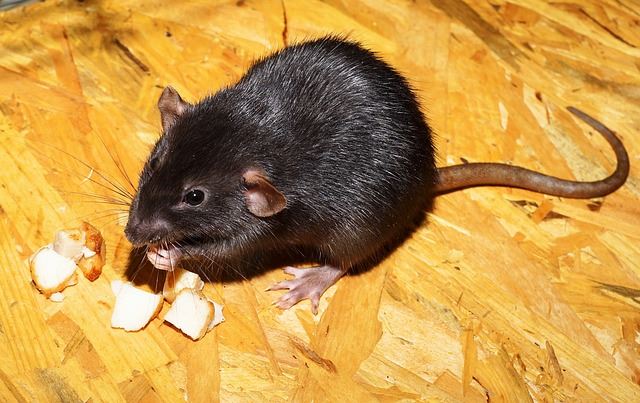They may be small, but rodents can wreak havoc in our living spaces, causing damage to property and posing health risks. To safeguard our homes, it is essential to identify the early signs of a rodent infestation.
In this blog, we’ll uncover the secrets of rodent activity, shedding light on the clues they leave behind. From gnawed wires and shredded nesting materials to the unmistakable odor of their presence, we explore the top indicators that rodents have made themselves at home.
Why Do I Have Rodents?
Having rodents in your home can be concerning and frustrating, but understanding the reasons behind their presence can help you take appropriate measures to address the issue effectively.
One of the primary reasons why rodents are attracted to homes is the abundance of food sources. They are opportunistic feeders and will take advantage of any available food, including crumbs, spilled pet food, unsealed containers, and garbage. If your home provides easy access to food, rodents will be more likely to take up residence.
Rodents also need water to survive. Leaky pipes, dripping faucets, and even pet water dishes can provide a steady water supply for rodents, making your home more appealing. Moisture-rich environments, such as basements and crawl spaces, attract rodents seeking water sources.
Gaps and cracks in walls, attics, and basements offer suitable locations for rodents to hide and create their nests. During colder months, rodents are more likely to seek refuge indoors to escape the harsh weather and find a more comfortable environment.
The ease of access is another factor that draws rodents to your home. Some are excellent climbers and can squeeze through tiny openings. Holes in walls, gaps around doors and windows, damaged screens, and even open vents can serve as entry points, allowing rodents to enter your home in search of food and shelter.
Moreover, the external environment around your property can influence rodent activity. Having abundant vegetation or clutter, such as overgrown bushes, shrubs, and piles of debris, can create a conducive environment for rodents to thrive and attract them to your home.
To address a rodent infestation, it’s crucial to identify and eliminate the factors that attract them to your home. This includes appropriately storing food in sealed containers, promptly cleaning up spills and crumbs, sealing entry points, and maintaining a clutter-free environment.
Regularly inspecting your home for signs of rodent activity and implementing preventive measures can help ensure your living space remains rodent-free. If the infestation persists or becomes unmanageable, consider seeking professional pest control services to address the issue safely and efficiently.
10 Signs of a Rodent Infestation
Detecting a rodent infestation is crucial to prevent damage to your property and safeguard your health. Here are the top signs that may indicate a rodent infestation:

Droppings: One of the most common and unmistakable signs of a rodent infestation is the presence of droppings. Mice and rats leave small, cylindrical-shaped feces resembling brown rice grains. These droppings can be found scattered along their typical pathways, near food sources, and in hidden corners. Fresh droppings are moist and dark, while older ones become dried and lighter in color.
Gnaw marks: To wear down their evergrowing teeth, rodents constantly gnaw on objects around your home. As a result, they leave distinctive gnaw marks on wood, wires, plastic, and cardboard. Look for chewed-up edges of food containers, gnawed-on furniture, or damaged electrical cables as evidence of rodent activity.
Nesting materials: Mice and rats create nests using a variety of materials, such as shredded paper, fabric, insulation, and plant matter. These nests are typically built in hidden, secluded areas, like wall voids, attics, or basements. Discovering a collection of nesting materials in these spaces indicates rodent infestation.
Tracks and runways: As rodents repeatedly travel along their established paths, they leave greasy marks and dirt on surfaces, creating visible “runways.” These runways may be observed along walls, baseboards, and the edges of objects. Observing these tracks lets you determine the areas where rodents are most active.
Scurrying noises: Rodents are nocturnal creatures and are most active at night. If you hear scratching, scurrying, or squeaking sounds from walls, ceilings, or crawl spaces, especially after dark, it indicates rodents moving about.
Unusual pet behavior: Cats and dogs are natural predators, and their behavior may change when rodents are present. Pets may exhibit heightened attention to specific areas, persistent sniffing, or scratching around walls and corners as they detect the presence of rodents.
Strange smells: Rodents emit a distinct, musty odor, particularly in areas where they nest or travel frequently. This smell is often more noticeable in enclosed spaces such as cabinets, crawl spaces, or under sinks. If you detect an unusual, persistent odor, it could indicate a nearby infestation.
Footprints or tail marks: In dusty or muddy areas, you may notice footprints or tail marks left by rodents as they move about. These marks can help identify the type of rodent present and the places they frequent.
Food packaging damage: Rodents are resourceful foragers and can chew through food packaging to access their meals. Check for gnaw marks on food containers or bags, especially in pantries, cabinets, or storage areas where food is stored.
Visible rodents: In more severe infestations, you may spot rodents themselves during the day, primarily if the population has grown large or their nesting areas have been disturbed. Seeing live rodents in your home indicates an active infestation requiring immediate attention.
If you notice any of these signs, it’s essential to take prompt action to address the rodent infestation.
Rodents can reproduce rapidly and carry diseases, posing health risks and causing property damage. Seeking professional pest control assistance or implementing effective DIY measures can help eliminate the problem and prevent further issues.
Contact us today to help eliminate rodents and protect your home from pests!
The post Top 10 Signs of a Rodent Infestation appeared first on Precision Pest & Home Services | Pest Control Experts in Greater Charleston, SC.

